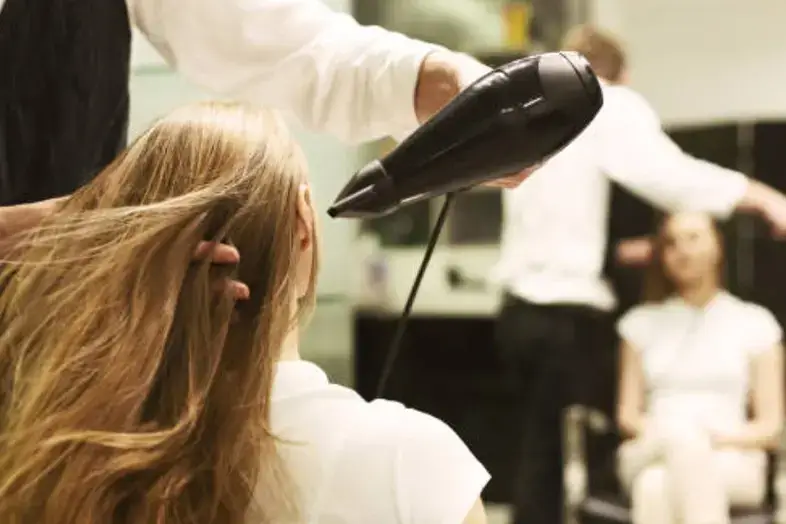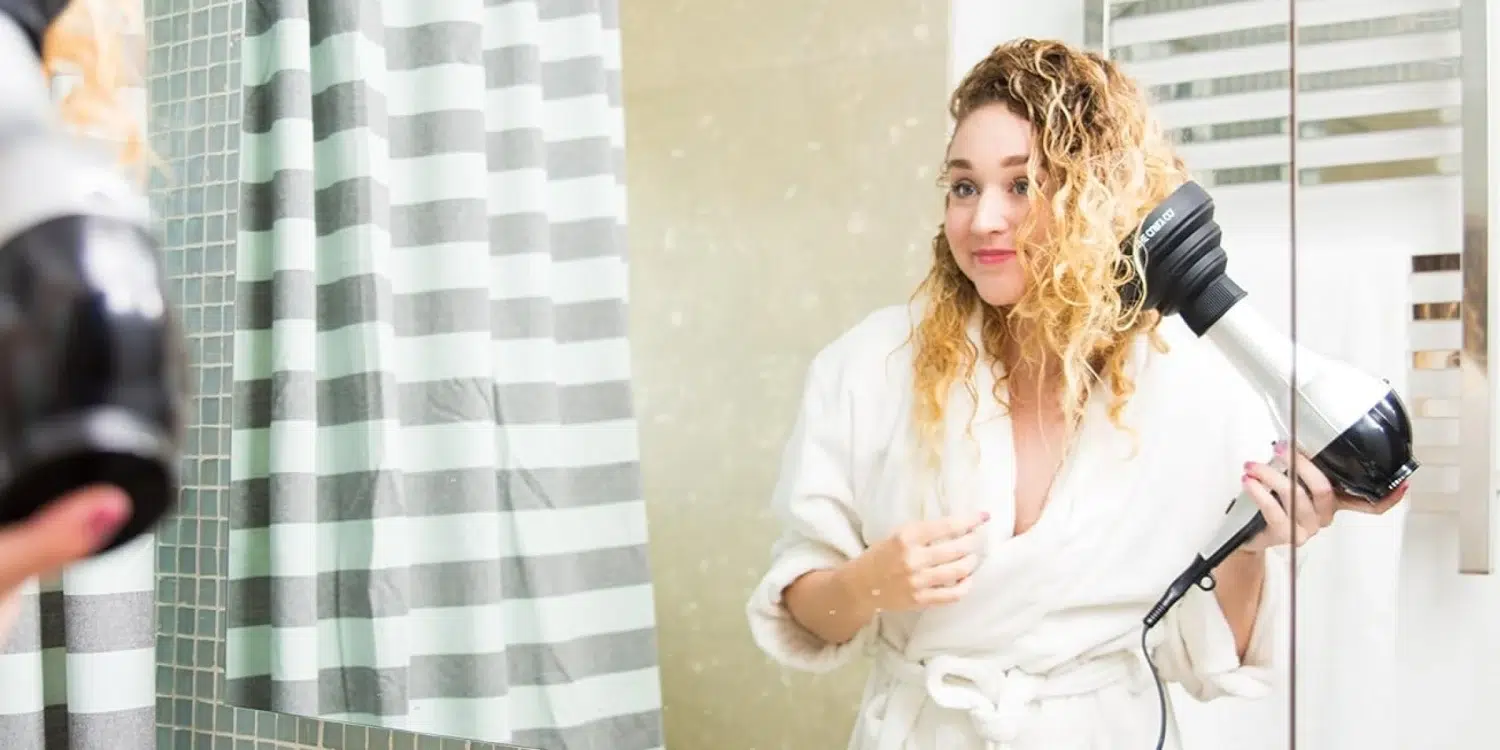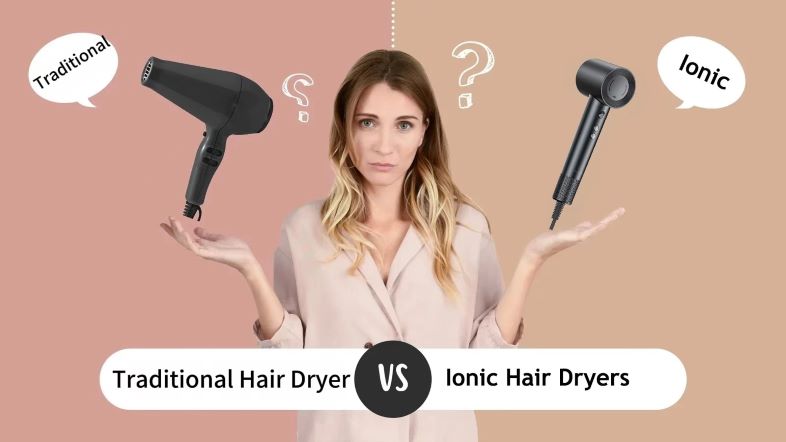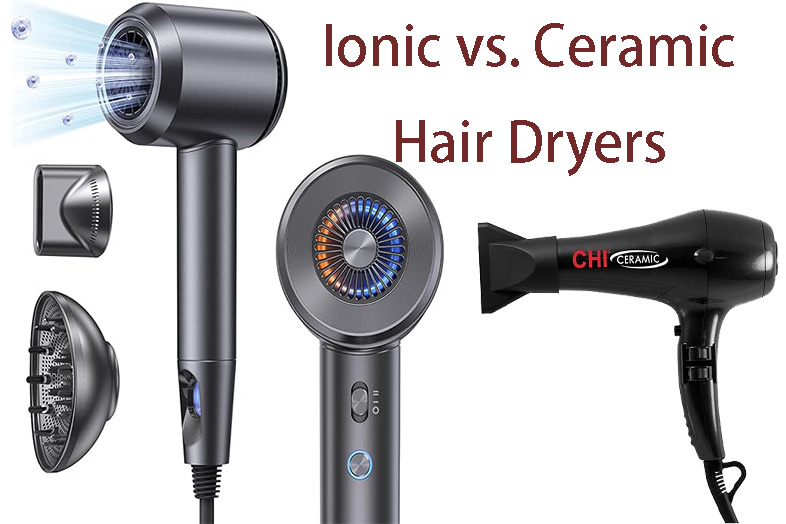Choosing the right hair dryer is more than a matter of drying your hair; it’s about selecting a tool that aligns with your lifestyle, hair type, and styling needs. The right dryer can significantly reduce hair damage, improve the health of your hair, and streamline your daily routine. In this guide, we compare two popular types of hair dryers: handheld and stand, to help you determine which ally is best suited for your hair care journey.
Handheld hair dryers are the most common type, known for their versatility and ease of use. They cater to a wide range of hair types and styling needs, making them a staple in households worldwide. On the other hand, stand hair dryers, often seen in professional salons, offer a hands-free drying experience and are praised for their uniform heat distribution and professional-grade results. Each type has its unique set of benefits and limitations, which we’ll explore in detail.
Section 1: Handheld Hair Dryers
Overview of Handheld Hair Dryers
Handheld hair dryers are compact, lightweight devices designed for manual operation. They offer the convenience of drying and styling hair almost anywhere, from your home bathroom to a hotel room. Equipped with various heat settings and sometimes even ionic and ceramic technologies, handheld dryers can cater to different hair types and styling preferences.
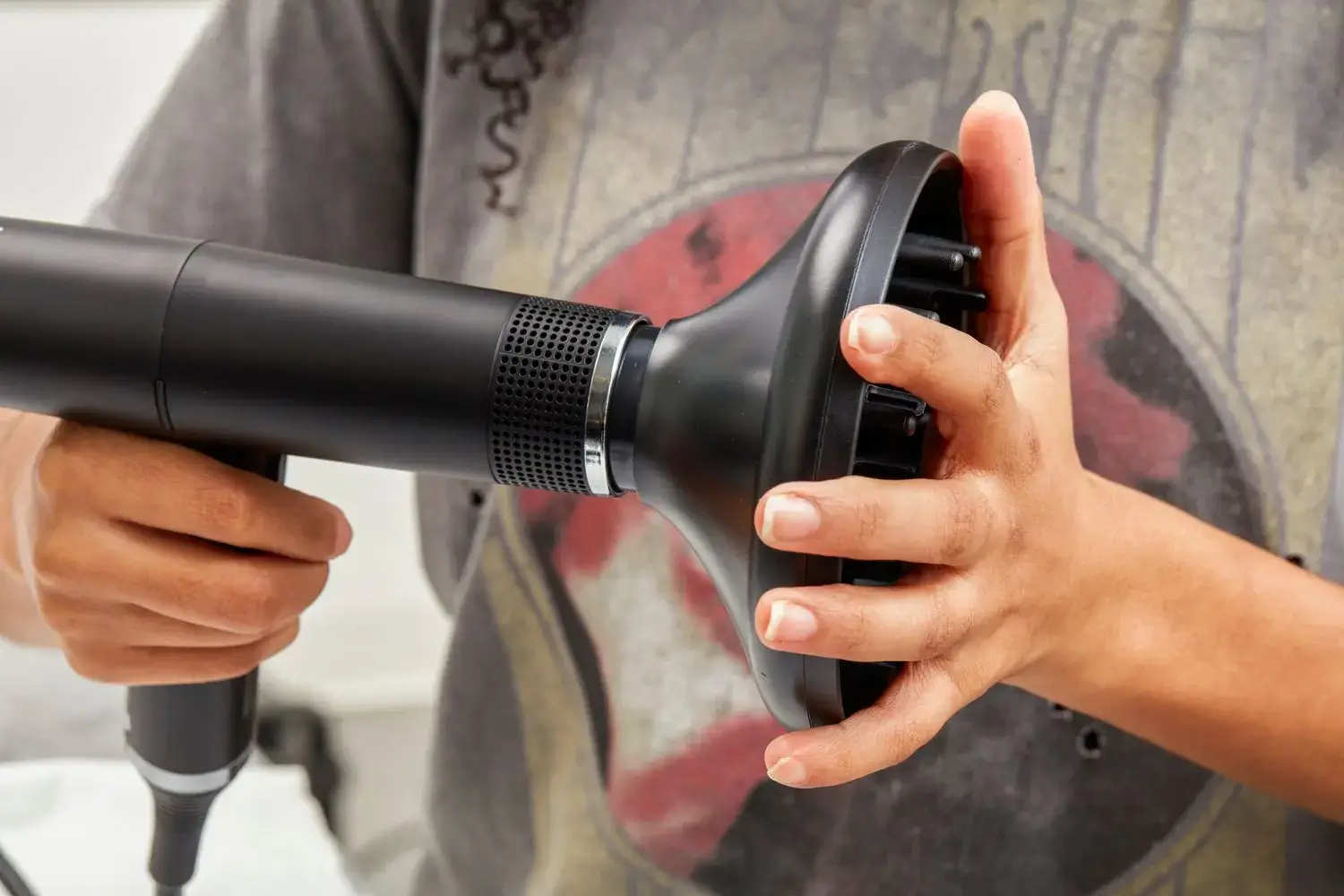
Pros of Handheld Hair Dryers
Portability: Their compact size makes them easy to store and carry, ideal for those who travel frequently or have limited storage space.
Versatility: Handheld dryers often come with multiple heat settings, speed options, and attachments like diffusers and concentrators, making them suitable for a range of hair types and styles, from straight to curly.
Affordability: With a wide range of options available, handheld hair dryers can fit almost any budget. They offer a cost-effective solution for those who need a reliable hair dryer without the hefty price tag of professional models.
Cons of Handheld Hair Dryers
Limited Power and Efficiency for Professional Use: While there are powerful handheld models available, they often cannot match the drying speed and efficiency of stand dryers, which can be a drawback for professionals or those with thick, long hair seeking quick drying times.
Ergonomic Considerations: Frequent use of handheld dryers can lead to wrist and arm fatigue, especially with heavier models. This is a significant consideration for those with hair that requires extensive drying and styling time.
Section 2: Stand Hair Dryers
Overview of Stand Hair Dryers

Stand hair dryers, often seen in professional salons, offer a unique blend of power and convenience for serious styling and hair care. Characterized by their large hood that encompasses the hair and head, these units stand on the floor or a table, freeing up both hands for multitasking. Unlike their handheld counterparts, stand hair dryers provide a consistent and even flow of air, making them ideal for various treatments, from deep conditioning to intricate styling processes.
Pros of Stand Hair Dryers
Professional-Grade Power and Efficiency
Stand hair dryers are equipped with powerful motors designed to offer an even and steady air flow, reducing drying time significantly. This efficiency is not just about speed; it also means a more thorough drying process, which is essential for certain hairstyles and treatments that require precise control and uniform application of heat.
Hands-Free Operation
One of the most significant advantages of stand hair dryers is their hands-free operation. This feature allows users to engage in other activities, such as reading, browsing on a mobile device, or even performing additional beauty treatments. For professionals, it means the ability to work on one client’s hair while another is under the dryer, maximizing salon efficiency.
Durability and Longevity
Constructed with professional use in mind, stand hair dryers are built to last. They are made from high-quality materials to withstand frequent use, making them a worthy investment for salons or individuals looking for a durable hair care solution. Their longevity is a testament to their build quality, designed to endure the rigors of daily use without compromising performance.
Cons of Stand Hair Dryers
Lack of Portability
The most notable downside to stand hair dryers is their lack of portability. Their size and design, while ideal for stationary use, make them impractical for travel or easy relocation. For those with limited space or the need for a mobile hair drying solution, stand hair dryers may not be the best option.
Higher Cost
Given their professional-grade design and durability, stand hair dryers come with a higher price tag compared to handheld models. This investment may be justifiable for salons or professional stylists, but for casual users, the cost may be a significant deterrent, especially if the dryer is not used frequently enough to justify the expense.
Space Requirements
Stand hair dryers require a dedicated space, not just for operation but also for storage. In smaller living spaces or tightly-packed salons, finding room for a stand dryer can be challenging. This requirement for space must be considered when opting for a stand hair dryer, as it may impact the overall functionality and layout of the area.
Section 3: Key Factors to Consider
Hair Type and Needs
Choosing the right hair dryer is paramount in maintaining the health and style of your hair. Different hair types and styling needs demand specific features from a hair dryer. For instance, thick, curly hair requires a dryer with high wattage for efficient drying and a diffuser attachment to enhance curl definition without causing frizz. On the other hand, fine or thin hair benefits from a dryer with variable heat settings to prevent heat damage and a concentrator nozzle to add volume. Understanding your hair’s needs can guide you in selecting a dryer that not only protects your hair but also optimizes your styling routine.
Usage Frequency
How often you use a hair dryer can significantly influence your choice. For those who rely on their dryer daily, investing in a professional-grade stand dryer might be worth considering, thanks to their durability and superior drying power. These models are designed for frequent use and can handle the demands of constant operation without overheating or losing efficiency. Casual users who dry their hair occasionally may find that a handheld dryer offers the convenience and functionality needed without the added cost or space requirements of a stand dryer.
Budget
Your budget plays a crucial role in the decision-making process. Stand hair dryers often come with a higher price tag due to their advanced features, durability, and professional-grade performance. If you’re looking for a long-term investment in your hair care routine, especially for those in professional settings, a stand dryer might justify its cost over time. However, the market offers a wide range of handheld dryers, from basic models for light use to high-end ones with salon-quality features, ensuring there’s an option to suit various budgets. It’s important to balance the initial cost with the expected longevity and features to find a dryer that offers the best value for your money.
Space and Storage
The amount of available space in your home or salon can dictate the type of dryer that’s most suitable for you. Stand hair dryers require a dedicated space and are not easily stored away, making them less ideal for small living spaces or for those who prefer a minimalist setup. They are better suited for professional salons or individuals with ample space who prioritize functionality and performance over portability. Handheld dryers, conversely, are perfect for those with limited space or the need for a portable styling tool. They can be easily stored in a drawer or cabinet, making them ideal for small bathrooms, travel, or as an on-the-go styling solution.
Section 4: Feature Comparison
When choosing between handheld and stand hair dryers, it’s essential to consider several key features that impact their performance, convenience, and longevity. Here, we compare these features to help you make an informed decision.
Power and Heat Settings

Handheld Hair Dryers: These dryers are known for their variable power and heat settings, which can range significantly across different models. Generally, they offer wattages from 800 to 2000 watts or more, allowing users to adjust the heat and speed based on their hair type and styling needs. Higher wattage models can dry hair faster, making them suitable for thick or long hair. However, it’s important to use lower heat settings for fine or damaged hair to prevent heat damage.
Stand Hair Dryers: Stand hair dryers typically feature higher wattage and more robust heat settings compared to their handheld counterparts. They are designed to provide consistent, powerful drying, ideal for settings where time efficiency and thorough drying are paramount, such as salons. The heat distribution is often more even, reducing the risk of heat damage when used correctly. Some stand models come with built-in timers and adjustable temperature settings, offering precise control for various hair treatments.
Attachments and Accessories
Handheld Hair Dryers: The versatility of handheld hair dryers is enhanced by a wide range of attachments and accessories available, including concentrator nozzles for focused drying, diffusers for enhancing natural curls, and comb attachments for straightening. These accessories make handheld dryers highly adaptable to different hair types and styling techniques.
Stand Hair Dryers: While stand hair dryers may not offer the same variety of attachments as handheld models, they excel in providing a uniform drying experience, particularly useful for deep conditioning treatments and setting hairstyles. Some models include a hood that can accommodate large rollers, which is an advantage for certain styling methods. However, the customization options in terms of attachments are generally more limited.
Ease of Use and Ergonomics
Handheld Hair Dryers: The design of handheld dryers focuses on ergonomics and ease of use, with lightweight models and ergonomically shaped handles minimizing wrist and arm fatigue during styling. The flexibility to move the dryer freely allows for precise styling, making it easier to achieve the desired look.
Stand Hair Dryers: The primary advantage of stand hair dryers in terms of ease of use is their hands-free operation. This feature is particularly beneficial for professional stylists or users who prefer a more relaxed styling session without the need to hold the dryer. However, the stand hair dryer’s fixed position may limit maneuverability and require the user to adjust their position around the dryer.
Maintenance and Durability
Handheld Hair Dryers: Maintenance for handheld dryers typically involves regular cleaning of the air filter to ensure optimal performance and prevent overheating. While these dryers are designed for durability, their lifespan can vary based on usage patterns and quality. Frequent travel and handling can increase wear and tear.
Stand Hair Dryers: Stand hair dryers are generally built for more extended use and durability, especially those used in professional settings. They require similar maintenance, such as cleaning filters and checking for loose parts, but their stationary design minimizes physical damage from handling. Their construction is aimed at withstanding the rigors of daily use in a salon environment.
Section 5: Making the Decision
When it comes to choosing between a handheld and a stand hair dryer, the decision boils down to understanding your specific needs, preferences, and styling habits. This section will guide you through considering various factors to ensure you select the hair dryer that best suits your lifestyle and hair care routine.
Tips for Choosing the Right Type of Hair Dryer
Evaluate Your Hair Type and Styling Needs: If you have thick, long, or curly hair that requires significant drying time, a stand hair dryer might be your best bet for its efficient, hands-free operation. For those with shorter or less demanding hair types, a handheld model offers convenience and quick styling.
Consider Your Space: Stand hair dryers require more space and are less portable than their handheld counterparts. If you have a dedicated styling area or salon space, a stand dryer could be a perfect fit. For those with limited space or who need a dryer that can travel with them, handheld is the way to go.
Frequency of Use: For professionals or individuals who use a hair dryer daily, investing in a stand dryer might make sense for its durability and professional-grade results. Occasional users might find a handheld dryer sufficient for their needs.
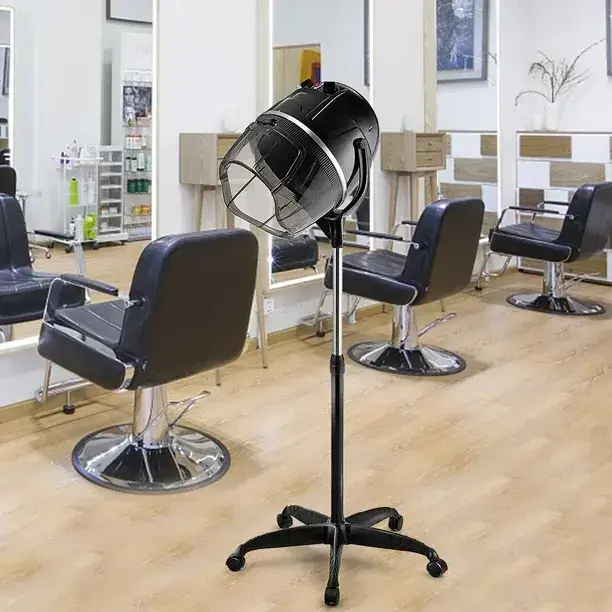
Budget Constraints: Generally, stand hair dryers are more expensive than handheld models. Determine your budget and find the best option within your price range, keeping in mind that sometimes spending a bit more upfront can save money in the long run due to durability and energy efficiency.
Personal Comfort and Ergonomics: If holding a dryer for extended periods is uncomfortable for you, a stand dryer can provide relief and a more enjoyable styling experience. However, if you prefer direct control over styling and moving freely, a handheld dryer is preferable.
Personal Preferences vs. Practical Requirements
Choosing a hair dryer often involves balancing what you want with what you actually need. While a high-end stand dryer with advanced features might be appealing, it might not be necessary for your hair type or compatible with your lifestyle. Conversely, a compact and affordable handheld dryer might tick all the boxes for your travel needs but fall short in delivering the styling precision or power you desire for everyday use.
Conclusion
We’ve explored the key differences between handheld and stand hair dryers, focusing on their pros and cons, and how they match up against various factors like hair type, space, budget, and usage frequency. We’ve also offered tips for making the best choice tailored to your needs, emphasizing the importance of balancing personal preferences with practical requirements.
Your perfect hair dryer is the one that fits seamlessly into your lifestyle, meets your styling needs, and feels right in your hands or in your space. Whether it’s the versatility and convenience of a handheld model or the professional-grade power of a stand dryer, the right choice should make your hair care routine more enjoyable and effective. Remember, the best investment is in your comfort and happiness with your hair styling tools. Choose wisely, and let your hair reap the benefits.
